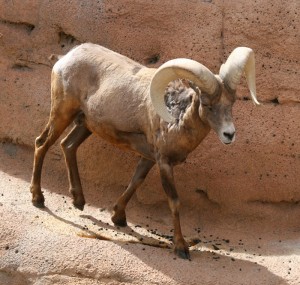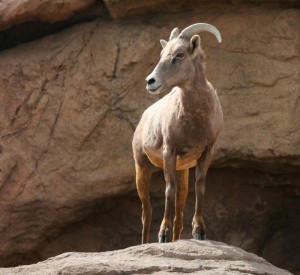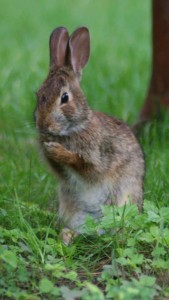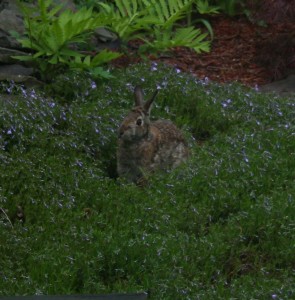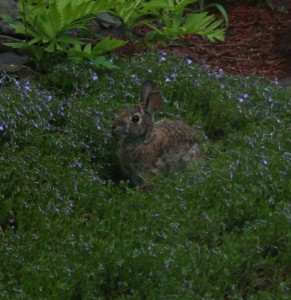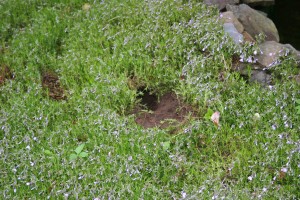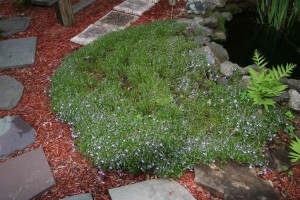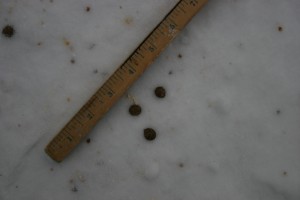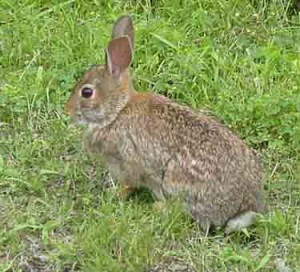General: Meadow voles (Microtus pennsylvanicus), sometimes called the field mouse or meadow mouse, are a small, common rodent that inhabits much of North America. They are prolific breeders whose populations tend to irrupt every few years. They are of the order Rodentia and family Cricetidae. Their presence can be determined by their unique tendency to construct nests that are surrounded by systems of runways.
Description: Meadow voles reach a mature length of 3.5” to 5”. Their tails, which are scaly and have little hair, may reach 1.4” to 2.6” in length, nearly 40% of their complete body length. Their mature weight is between 1oz. to 2ozs. Meadow voles can be identified by their compact bodies, large, slightly angular heads and small noses. Their ears, relative to other rodents, are small and lay fairly flat against the sides of the head.
Meadow voles have coarse dark brown or reddish brown hair mottled with black and lighter or white undersides. In the winter, their hair tends to be duller. There are no noticeable physical variations between males and females.
Meadow voles tend to be active throughout the day (usually above ground,) but become more diurnal during the cold months and nocturnal during warmer months. Because meadow voles do not hibernate, they spend the majority of their time throughout the year in search of food. They are skilled diggers and swimmers1.
Meadow voles generally build 6” to 8” round nests2 above ground but sometimes construct them within shallow burrows, using dry vegetation. During cold months, mixed-age and mixed-gender groups of non-reproducing voles may share a nest to conserve body temperature. The nest is the epicenter of a system of runways, used as sheltered passageways and typically littered with vegetation cuttings and droppings3.
Breeding females tend to be territorial of their home ranges (which are distinct from other females’ ranges,) while males are mobile and have ranges that are generally three times the size of females’ ranges. If more than one female occupies a range, the females tend to be a mother-daughter pair (and in this case, the mother typically prevents the daughter from breeding.)
Meadow voles may become aggressive if they are cornered or caught, stomping their feet and attacking to avoid danger. They use their runways (that are often covered in vegetation) for protection from predators, including birds of prey, snakes, bullfrogs, snapping turtles, foxes, weasels, shrews, raccoons, and cats4. The meadow vole is a major component of the diets of many of its predators.
Meadow voles have highly developed senses of hearing and smell, and communicate using chemical markers (droppings and urine are used to determine identity, sexual readiness, and proximity,) physical gestures, and vocalizations (including growls, squeals, and chatters.) The young emit ultrasonic signals. The majority of vocalizations are created in response to threats5.
Meadow voles are commonly preyed upon and often do not live more than one year in the wild, although they have been known to live as long as 2.7 years6.
Habitat: Meadow voles are predominantly found in low-lying fields, meadows, grassy marshes, grasslands, orchards, open woodlands (deciduous and mixed forests,) and occasionally in low wetlands, flooded marshes, and along river or lake shores.
Location: Meadow voles thrive throughout most of North America, from central Alaska, south to New Mexico and Georgia, as far west as the Rockies and east to the Atlantic coast7.
Diet: Meadow voles consume nearly 60% of their own body weight daily, feeding on a varied diet that consists mainly of grass, succulent vegetation, herbs and sedges found within their geographic ranges during warm months. During the fall, their diets consist mainly of seeds and grains and in the winter, meadow voles subsist on the roots and inner bark of trees and shrubs, which they harvest through girdling. They may also eat fruit, tubers, bulbs, flowers, leaves, insects, and at times, flesh.
Meadow voles do not generally store food, except for some small caches in preparation for the winter8. Because of their lack of food hoarding, meadow voles spend the majority of their time feeding.
Reproduction: Meadow voles are prolific breeders capable of having more than twelve litters in one year, determined by climate, food supplies, population densities of meadow voles and predators, and individual behavior. Breeding may occur during any month but is more frequent during warm months when food is readily available. Unless their populations are controlled or the carrying capacities of their environments are met, their populations may irrupt every three to five years9. Typical population densities average forty to eighty voles per acre10.
Females in estrous fiercely defend their territories and are sought out by males, who may aggressively compete with each other or establish temporary hierarchies to determine mating rights. After mating, females drive males away.
After a twenty-one day gestation period, the female gives birth to a litter of one to eleven pink, blind, hairless young that weigh just over 2 grams each. After eight days, their eyes open, within twelve to fourteen days, the young are weaned and by three weeks old the young are independent. Females reach sexually maturity within one month (at which point they are capable of having a litter nearly every three weeks for the rest of their lives,) and males reach sexual maturity within thirty-five days11.
Notes of Interest: Meadow voles are considered to be pests because of the destruction they cause in orchards and forestry initiatives12.
Footnotes
1. http://animaldiversity.ummz.umich.edu/accounts/Microtus_pennsylvanicus/
2. http://www.fcps.edu/islandcreekes/ecology/meadow_vole.htm
3. http://animaldiversity.ummz.umich.edu/accounts/Microtus_pennsylvanicus/
4. http://animaldiversity.ummz.umich.edu/accounts/Microtus_pennsylvanicus/
5. http://www.esf.edu/aec/adks/mammals/meadow_vole.htm
6. http://animaldiversity.ummz.umich.edu/accounts/Microtus_pennsylvanicus/
7. http://animaldiversity.ummz.umich.edu/accounts/Microtus_pennsylvanicus/
8. http://animaldiversity.ummz.umich.edu/accounts/Microtus_pennsylvanicus/
9. http://www.nysipm.cornell.edu/factsheets/treefruit/pests/vole/vole.asp
10. http://www.esf.edu/aec/adks/mammals/meadow_vole.htm
11. http://www.esf.edu/aec/adks/mammals/meadow_vole.htm
12. http://animaldiversity.ummz.umich.edu/accounts/Microtus_pennsylvanicus/
http://animaldiversity.ummz.umich.edu/accounts/Microtus_pennsylvanicus/
http://www.fcps.edu/islandcreekes/ecology/meadow_vole.htm
http://www.nysipm.cornell.edu/factsheets/treefruit/pests/vole/vole.asp
